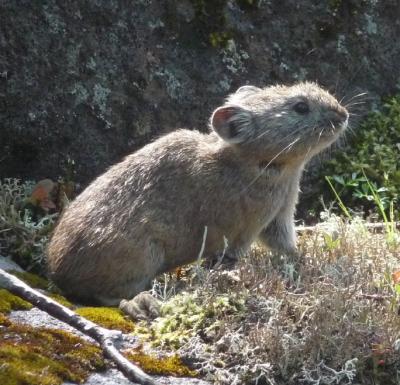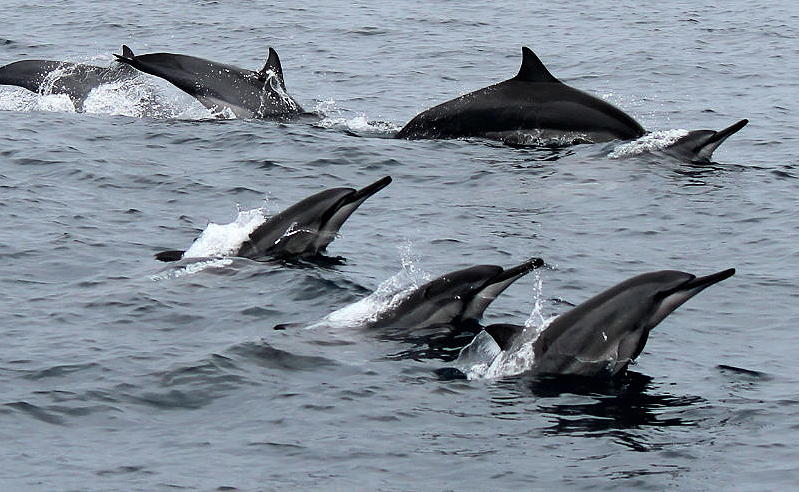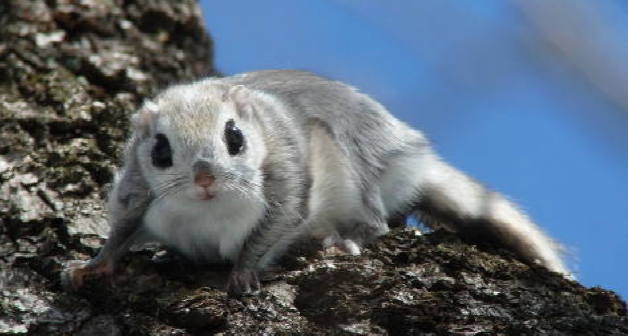The Mammals of Japan
 Japan conjures images of a range of iconic species: Japanese Macaque, Red-crowned Crane, Steller's Sea Eagle, Crested Ibis and Japanese Giant Salamander are just for starters.
Japan conjures images of a range of iconic species: Japanese Macaque, Red-crowned Crane, Steller's Sea Eagle, Crested Ibis and Japanese Giant Salamander are just for starters.
The isolated islands of the Japanese Archipelago support around 150 species of mammals, many of them rodents or bats, but with a wide range of small, medium and large mammals from flying squirrels and pikas to brown bears.
A number of these species are endemic to Japan - occurring there and nowhere else in the world - such as: Japanese Macaque, Japanese Serow, and Japanese Dormouse.
Diversity in adversity and isolation, defines the fauna and flora of Japan. Japan’s geological history, shaped by major subterranean forces as it rides the confluence of four major and minor tectonic plates, means that the archipelago has had a very chequered history.
At times the Japanese islands have been connected to the Asian continent, with the Sea of Japan a mere inland lagoon, and connections northwards via what is now Sakhalin to northeast Asia, and southwards via what are now the Korean Peninsula and the island of Taiwan. Through complex processes involving both tectonic movements and the pendulum swing between glacial and inter-glacial periods, at times sea-levels have risen, isolating parts of the archipelago as long ranges of mountains, or even as isolated mountain top islands (the Nansei Shoto today) where species have evolved in isolation, or sea-levels have fallen, re-connecting long-isolated lands to each other and sometimes to the nearby continent via land bridges across which continental mammals have been able to immigrate and expand their ranges, hence allowing the populations of species once isolated areas support to meet and mix once more.
The Japanese archipelago is dotted from Kyushu to Hokkaido with active volcanoes with eruptions occurring on some scale in most years. Earthquakes are frequent, often on a daily basis; tsunami occur fairly often, perhaps even annually, though their scale varies enormously and very few, perhaps only one a century, reach the towering proportions of the perhaps 30 m wave generated on 11 March 2011. Typhoons batter the islands, particularly in the southern half of the archipelago, multiple times each year. Under such adversity, and in prolonged isolation as an archipelago off the east Asian continent, Japan’s geological history combined with its great range of habitat types throughout its more than 3,000 km length, mean that it supports a very considerable range of mammal species for its size.
 Japan is sufficiently long for it to span sub-arctic regions in the north and sub-tropical regions in the south. Its altitudinal range (the Japan Alps rise to over 3,000 m, and its highest peak Mt Fuji to 3,776 m) is such that it presents multiple climatic zones at the same latitude, such that one can travel from broad-leaved evergreen forest up in to the alpine zone in just a few kilometres, or from arctic-like sea-ice along Hokkaido’s Sea of Okhotsk shore to sub-tropical waters around the Okinawan Islands, where mangroves and corals are found.
Japan is sufficiently long for it to span sub-arctic regions in the north and sub-tropical regions in the south. Its altitudinal range (the Japan Alps rise to over 3,000 m, and its highest peak Mt Fuji to 3,776 m) is such that it presents multiple climatic zones at the same latitude, such that one can travel from broad-leaved evergreen forest up in to the alpine zone in just a few kilometres, or from arctic-like sea-ice along Hokkaido’s Sea of Okhotsk shore to sub-tropical waters around the Okinawan Islands, where mangroves and corals are found.
The Japanese islands support a diverse range of ecological environments, and hence support a wide range of indigenous and endemic mammals, from Northern Fur Seal off Hokkaido to Dugong off Okinawa, from Brown Bear in Hokkaido to Asiatic Black Bear in Honshu, from Mountain Hare in Hokkaido and Japanese Hare in the main islands, to the Amami Rabbit, confined to that single island. Warm and cold currents wash the Japanese shores and provide habitat for a very wide range of cetaceans. Whale-watching is possible from northeast Hokkaido to the Ogasawara Islands and the Nansei Shoto, allowing observers to have exciting close range encounters with several species such as Humpback Whale, Minke Whale, Orca, and Spinner Dolphin.
© 2020 Mark Brazil
Last updated: 20200625

